ISSN ONLINE(2319-8753)PRINT(2347-6710)
ISSN ONLINE(2319-8753)PRINT(2347-6710)
Ramya.C1, Chinnaiya.S1, Prabha.S.U2
|
| Related article at Pubmed, Scholar Google |
Visit for more related articles at International Journal of Innovative Research in Science, Engineering and Technology
Z-Source Inverters (ZSI) have been recently proposed as an alternative power conversion concept as they have both voltage buck and boost capabilities. ZSI is an unique X-shaped impedance network that couples the converter main circuit to the power source. Among various topologies of ZSI, the concepts of Switched- Inductor and Trans Z-Source topologies are integrated into the classical Z-Source impedance network and their performance characteristics are considered in this work. The resulting topologies have enhanced voltage boosting capability. Switched-Inductor ZSI increases voltage boost inversion ability significantly. Trans Z-Source impedance network also leads to an enhanced boost ability assisted by the transformer. In power electronics, Pulse Width Modulation (PWM) have been the subject of intensive research and it is widely employed to control the output voltage of static power converters. Here, Space Vector Pulse Width Modulation (SVPWM) is implemented, which is a controlling technique in modulation. SVPWM can optimize the output voltage waveform of the inverter. A comparative study of boosted input voltage of various inverter topologies and also different PWM techniques are observed. This work explores the application of PWM methods in the estimation of power electronic waveforms are simulated using MATLAB.
Index Terms |
| Z-source inverter, boost inversion ability, switched inductor (SL), trans Z-source, PWM |
INTRODUCTION |
| Modern electrical systems like distributed generators, power conditioners, and industrial drives have raised the importance of DC-AC inverters, through which energy is appropriately conditioned. Existing popular inverter topologies still have some constraints to resolve with the first being their inflexible voltage or current conversion ranges. However, the traditional Voltage Source Inverter (VSI) and Current Source Inverter (CSI)[1] have been restricted due to their narrow obtainable output voltage range, shoot-through problems caused by misgating and some other theoretical difficulties due to their bridge type structures. |
| Due to the recent advancements in the fields of energy conversion and energy storage, a need has arisen to design inverters which can operate successfully with variable voltage sources such as fuel cells and ultra capacitors. The conventional VSI, which is the most commonly used type of inverter, suffers from the drawback that it cannot boost the voltage of the input source. Thus, a separate voltage boosting DC-DC converter is needed to interface the variable voltage source with the conventional VSI. This cascaded arrangement of two power converters increases not only the complexity of -circuitry and control but also the cost and the space requirement. In order to satisfy the pressing needs for a single converter that is capable of both voltage boosting and inversion, many new inverter topologies have been proposed. Among these new topologies, ZSI[3] in the year 2002 has attracted wide attention over the others mainly because it continues to employ a conventional VSI as the power converter, yet with a modified dc link stage. |
| As a research in power electronics, the Z-source topology as shown in Figure 1 has been greatly explored from various aspects. Due to the obvious advantages of ZSI[4], it have been adopted for various applications such as ac motor drives, fuel cell vehicles, uninterruptible power supplies, residential photovoltaic systems, electronic loads, wind power conversion and distributed generation. Besides those, a few new initiatives have recently been raised for ZSI research, which logically are applicable to other buck-boost inverters too. The first initiative is to raise their gains even further, which might be helpful for tying low voltage renewable sources to the grid. The second initiative, linked to the first, is to raise the generally low modulation ratio that a ZSI can produce at high voltage gain. ZSI is a safer topology that does not require dead time protection, unlike the traditional VSI. |
| A number of improvements have been proposed including the Switched-Inductor (SL), Tapped- Inductor (TL)[6], T-Source and Trans Z-source[5] configurations. Each technique has its own advantages and disadvantages that might better suit certain applications. The final decision on which to select is, therefore, dependent on the problems under consideration, individual judgments, and preferences. SL with the ZSI is an advanced DC-DC enhancement technique could be a good solution for improving impedance type inverters performance and promoting their further industrial applications. A Trans Z-source impedance network which also lead to an enhanced boost ability assisted by the transformer. |
| Existing modulation strategies include the Sinusoidal Pulse Width Modulation (SPWM) based on three phase shoot-through and the Space Vector Pulse Width Modulation (SVPWM) based on single phase shoot-through. The SPWM strategy is simple to realize. The SVPWM[2] strategy is achieved by modifying the traditional SVPWM in VSI. In each switching period, there are six shoot-through states, and the current of Z-source inductor pulses six times. SVPWM is widely used for variable frequency drive applications because of its various advantages such as the good DC utilization and less harmonics distortion in the output waveform. |
Z-SOURCE INVERTER AND ITS TOPOLOGIES |
| To overcome the problems of the traditional VSI and CSI, an impedance-source (or impedance-fed) power inverter (abbreviated as ZSI) and it is a control method for implementing DC-AC, AC-DC, AC-AC AND DC-DC power conversion. Figure.1 shows the general ZSI structure [9]. It employs an unique impedance network (or circuit) to couple the inverter main circuit to the power source, load, or another inverter, for providing unique features that cannot be observed in the traditional VSI and CSI where a capacitor and inductor are used, respectively. The ZSI overcomes the above mentioned conceptual and theoretical barriers and limitations of the traditional VSI and CSI and provides a novel power conversion concept. |
| In Figure.1, a two port network that consists of a split inductor L1 and L2 and capacitors C1 and C2 connected in X shape is employed to provide an impedance source (Z-source) coupling the inverter to the DC source, load, or another inverter. The dc source or load can be either a voltage or a current source or load. Therefore, the DC source can be a battery, diode rectifier, fuel cell, an inductor, a capacitor, or a combination of these. |
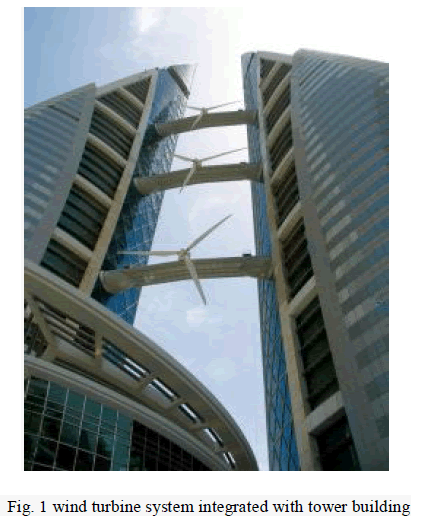 |
| Fig.1 Z-Source Inverter |
| Switches used in the inverter can be a combination of switching devices and diodes such as the antiparallel combination, series combination, etc. Inductance L1and L2 can be provided through a split inductor or two separate inductors. |
| For the traditional VSI, both switches of any phase leg can never be gated on at the same time or a short circuit (shoot through) would occur and destroy the inverter. The new ZSI advantageously utilizes the shoot-through states to boost the DC bus voltage by gating on both upper and lower switches of a phase leg. Therefore, the ZSI can boost voltage and produce a desired output voltage that is greater than the available dc bus voltage. |
| In addition, the reliability of the inverter is greatly improved because the shoot-through state can no longer destroy the circuit. Thus, it provides a low cost, reliable and high efficiency single stage structure for buck and boost power conversion. The inverter bridge is equivalent to a short circuit when the inverter bridge is in shoot-through zero state, whereas the inverter bridge becomes an equivalent current source when in one of the six active states. Note that the inverter bridge can be also represented by a current source with zero value (i.e., an open circuit) when it is in one of the two traditional zero states.Some of the recently introduce high gain topologies of ZSI are Embedded ZSI, Switched-inductor ZSI, Tapped-inductor ZSI, Trans ZSI and Alternate cascaded ZSI. Topology selection depends on the problems under consideration, individual judgments and preferences |
TOPOLOGICAL ANALYSIS OF SWITCHED-INDUCTOR AND TRANS Z-SOURCE INVERTER |
| A. Switched-Inductor ZSI |
| The proposed Switched-inductor (SL)[26] ZSI in Figure.2 consists of four inductors (L1, L2, L3, and L4), two capacitors (C1 and C2), and six diodes (D1, D2, D3, D4, D5, and D6). The combination of L1-L3-D1-D3-D5 and the combination of L2-L4-D2-D4-D6 performs the function of the top SL cell and the bottom SL cell, respectively. Both of these two SL cells are used to store and transfer the energy from the capacitors to the dc bus under the switching action of the main circuit. |
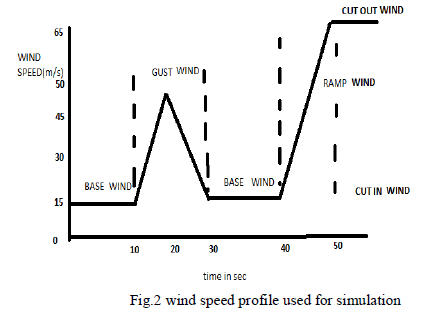 |
| Operating Principles |
| From the viewpoint of the switching states of the main circuit connected with SL impedance network, the operation principles of the proposed impedance network are similar to those of the classical Z-source impedance network. The substates of the proposed impedance network are classified into the shootthrough state[13] and the non shoot-through state, respectively. |
| Shoot-through state: During this substate, S is ON, while both Din and Do are OFF. For the top SL cell, D1 and D2 are ON, and D3 is OFF. L1 and L3 are charged by C1 in parallel. For the bottom SL cell, D4 and D5 are ON, and D6 is OFF. L2 and L4 are charged by C2 in parallel. This state corresponds to the additional zero state produced by the shoot-through actions of the top and bottom arms, and its equivalent circuit is shown in Figure.3. It is seen that both the top and bottom SL cells perform the same function to absorb the energy stored in the capacitors. |
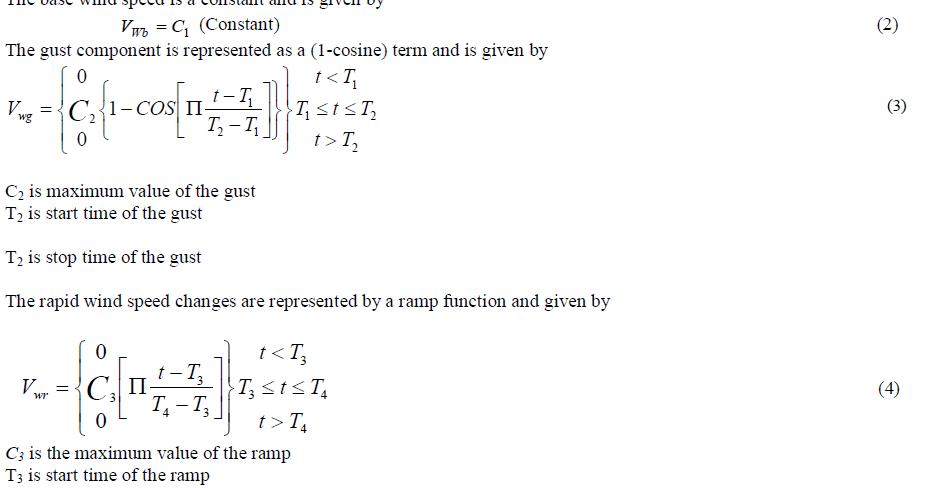 |
| Non shoot-through state: This state corresponds to the six active states and two zero states of the main circuit and the equivalent circuit is shown in Figure.4. |
 |
| Fig.4 Equivalent circuit of Non shoot-through zero state (SL) |
| During this substate, S is OFF, while both Din and Do are ON. For the top SL cell, D1 and D3 are OFF, and D5 is ON. L1 and L2 are connected in series, and the stored energy is transferred to the main circuit. For the bottom SL cell, D4 andD5 are OFF, and D5 is ON. L3 and L4 are connected in series, and the stored energy is transferred to the main circuit. At the same moment, to supplement the consumed energy of C1 and C2 during the shoot-through state, C1 is charged by Vin via the bottom SL cell, and C2 is charged by Vin via the top SL cell. |
| B. Trans ZSI |
| Trans ZSI[15] is shown in Figure.5 whose basic gain boosting principles however remains unchanged and is heavily dependent on perfect magnetic coupling. It employs two transformer windings in the impedance network. Depends on the turns ratio of the two windings, the trans ZSI can obtain a higher boost gain with the same shoot-through duty ratio. |
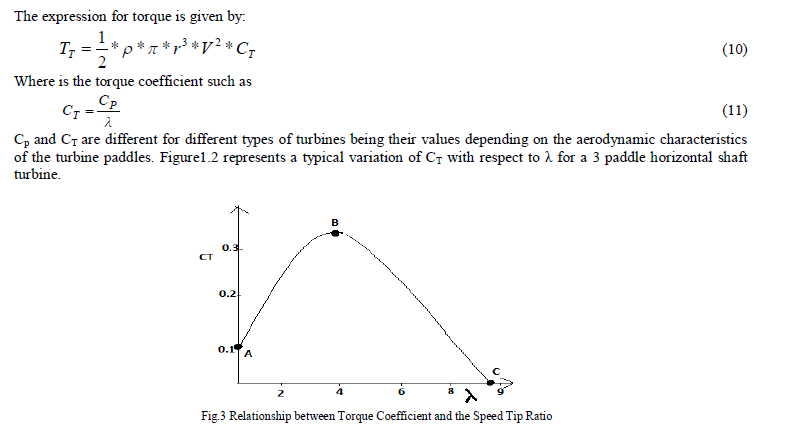 |
| Fig.5 Trans ZSI |
| 1) Operating Principles |
| Shoot-through state: The trans ZSI has two of its switches from the same phase leg turned ON to imitate the boost switch found in a classical dc-dc boost converter as in Figure.6. Simultaneously, input diode D reverse biases to form an open circuit. Voltages vW1 and vW2 across the coupled windings W1 and W2 can then be written as vW1 = VC, vW2 = γ2vW1 .where VC represents voltage across the capacitor, and γ2 represents turns ratio of W2 to W1. |
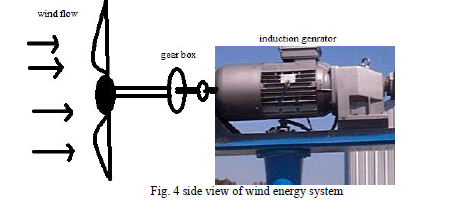 |
| Non shoot-through state: As shown in Figure.5.7, the conduction of input diode D can firmly connect the input source Vdc to the rest of the circuit. |
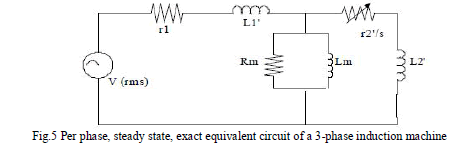 |
| Fig.7.Equivalent circuit of non shoot-through zero state (trans) |
| Based on this representation, voltages vW1 and vW2 can be written as vW1 = vW 2/γ2 and vW2 = Vdc – VC. Since winding voltages per switching period will average to zero, dSTVC + (1 − dST)(Vdc − VC )/γ2 = 0 where dST is the fractional time during which the inverter is in its shoot-through state. This time is usually kept constant to avoid introducing low order ripple to the inverter voltages and currents. |
SPACE VECTOR PULSE WIDTH MODULATION |
| The method of determining the width and sequence of voltage pulses produced for inverter is known as PWM[10]. A number of PWM schemes are used to obtain variable voltage and frequency supply. The most widely used PWM schemes for three phase VSI are carrier based sinusoidal PWM and SVPWM. SVPWM algorithm is powerful in modulation, which can optimize the output voltage waveform. There is an increasing trend of using SVPWM because of their easier digital realization and better dc bus utilization. |
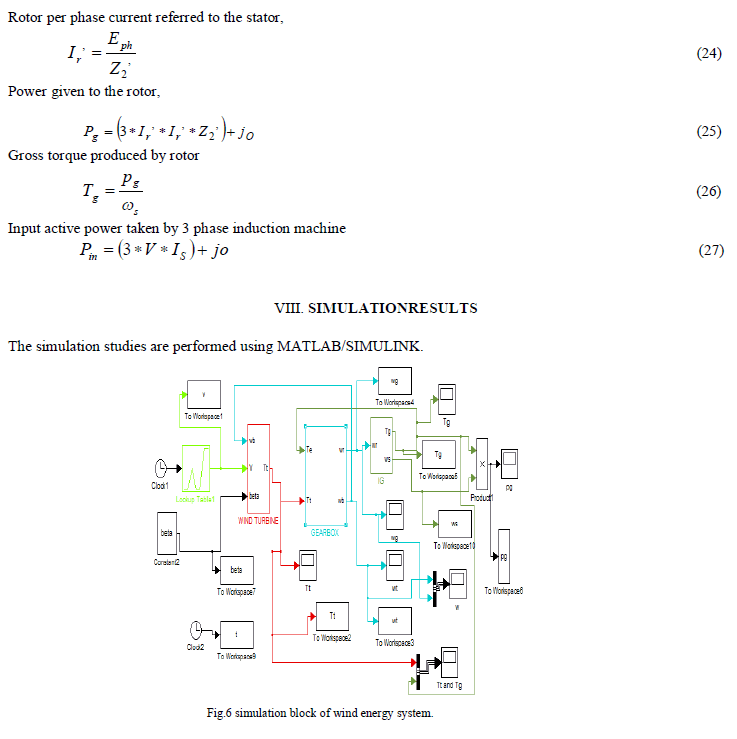 |
| Fig.8 Switching vectors of space vector modulation |
| SVPWM technique is extensively applied in the three phase power electronics circuits because of its easy digital implementation and wide linear modulation range features. The introduction of space vectors, origin for the purpose of analysis of threephase machines, has led to the development of an inherently digital modulation method. Switching vectors of space vector modulation are shown in Figure.8. This application note gives an extensive introduction to its theory and provides routines that allow for easy implementation of SVPWM into the user’s control algorithm. |
SIMULATION PERFORMANCE AND RESULTS |
| MATLAB is a high performance language for technical computing. It integrates computation, visualization, and programming in an easy to use environment. MATLAB is an excellent tool for teaching and research. MATLAB simulink models for various Z-Source Inverter topologies are modeled. It is simulated with the different PWM methods. The results are studied based on the performance of two different topologies of Z-Source Inverter. |
| A. Switched-Inductor ZSI with sinusoidal PWM |
| Switched-inductor topology was integrated with three phase inverter. Sinusoidal PWM is used to generate pulse signal for three phase inverter. Corresponding boosted input DC voltage and three phase output voltage waveforms are shown in Figure.9 and 10.DC voltage fed as input is 300V. |
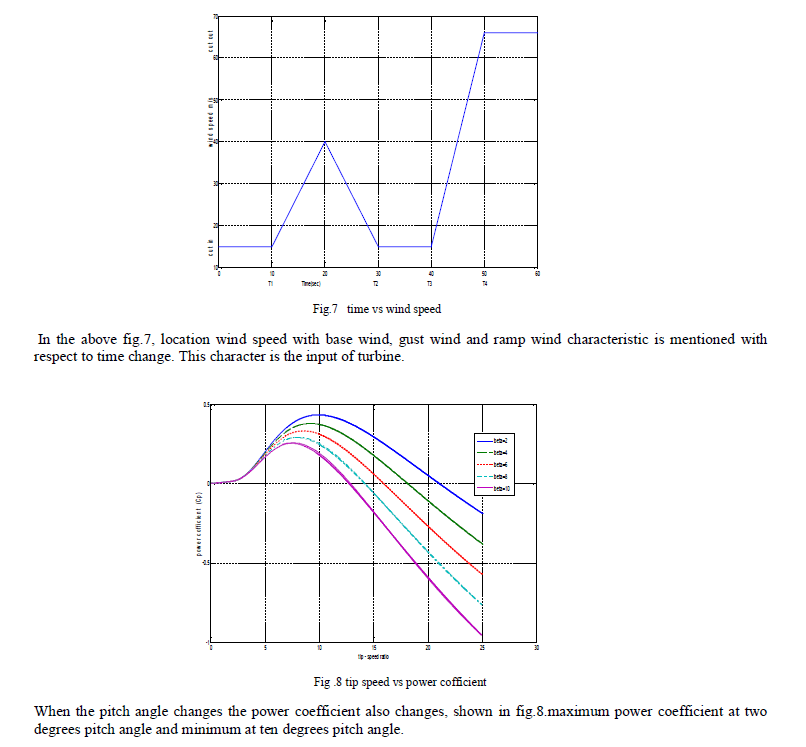 |
| Fig.9 Input voltage waveform |
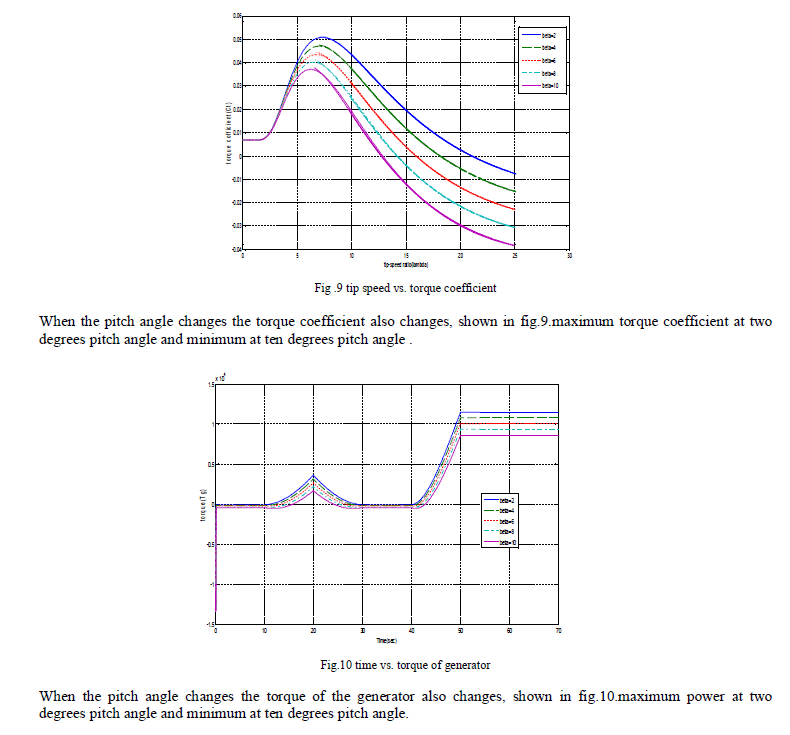 |
| Fig.10 Three phase output voltage waveform |
| B. Trans ZSI with sinusoidal PWM |
| 300V is applied as DC input voltage. Trans ZSI topology was integrated with three phase inverter. Sinusoidal PWM is used to generate pulse signal for three phase inverter. Corresponding boosted input DC voltage and three phase output voltage waveforms are shown in Figure.11 and 12. |
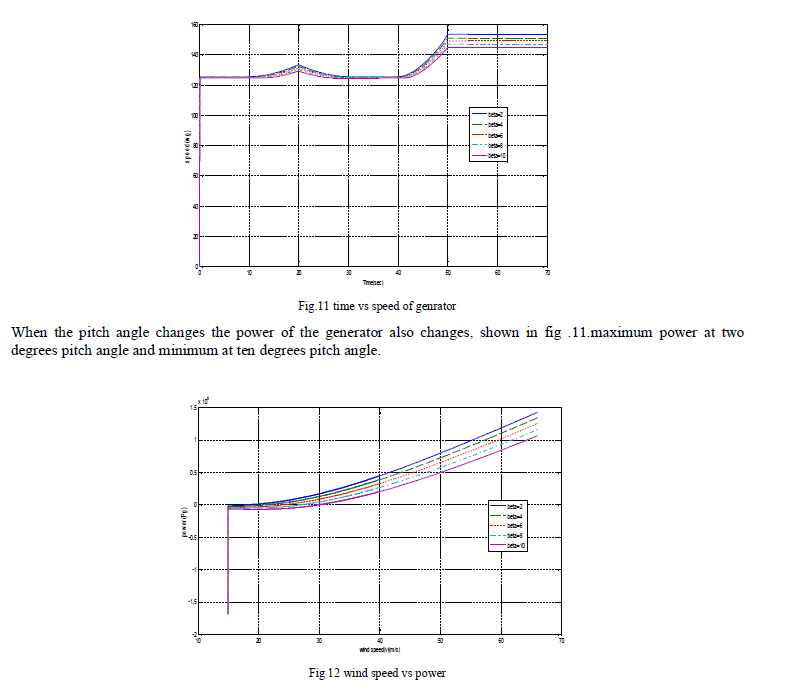 |
| Fig.11 Input voltage waveform |
 |
| Fig.12 Three phase output voltage waveform |
| C. Switched-Inductor ZSI with space vector PWM |
| Three phase inverter along with switched-inductor topology was designed. Space vector PWM is used to generate pulse signal for three phase inverter. Corresponding boosted input DC voltage and three phase output voltage waveforms are shown in Figure.13 and 14. |
 |
| Fig.13 Input voltage waveform |
 |
| Fig.14 Three phase output voltage waveform |
| D. Trans ZSI with space vector PWM |
| Trans ZSI topology was included with three phase inverter. 300V is applied as DC input voltage. Space vector PWM is used to generate pulse signal for three phase inverter. Corresponding boosted input DC voltage and three phase output voltage waveforms are shown in Figure.15 and 16. |
 |
| Fig.15 Input voltage waveform |
 |
| Fig.16 Three phase output voltage waveform |
| E. Comparison Table |
| The comparison result of various topologies of ZSI shows that the Switched-Inductor ZSI has high voltage boost capability as compare to Trans ZSI. Voltage THD comparison of two modulation strategies, SPWM (conventional) and SVPWM (proposed) are observed using FFT analysis as shown in Table I. |
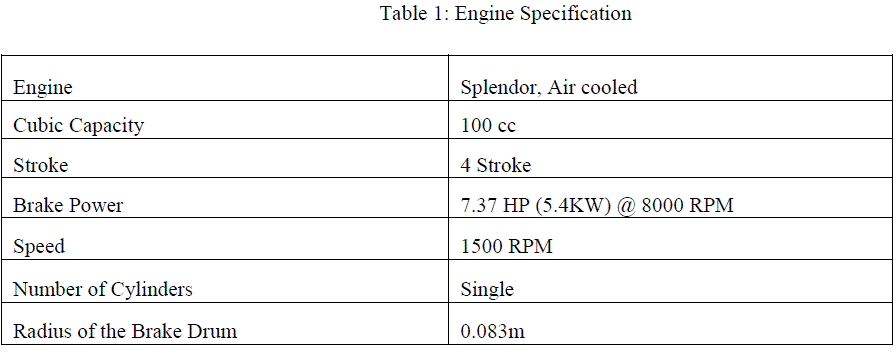 |
 |
CONCLUSION |
| Comparative studies of ZSI system have been performed in this work. The comparison result shows that the ZSI can enhance high voltage boost capability in Switched-Inductor ZSI compare to Trans ZSI. SVPWM technique can optimize the output voltage waveform and also reduces THD values in the output voltage. Along with these results, the ZSI offers a simplified single stage power conversion topology and high reliability because the shoot-through caused by EMI can no longer destroy the inverter. Furthermore, the concepts of ZSI can be applied to all power conversion areas, which will be beneficial for the engineering applications of the impedance type power converters. |
References |
|